The Best things to Do and See in Kyoto
We spent 5 weeks in Kyoto and saw lots of beauty. This post covers what we consider the most impressive (and not so impressive) sights in Kyoto: they include shrines, temples, gardens and modern architecture. I also cover our favorite day trip as well some of our favorite activities.
Note: Kyoto was the capital of Japan from 794 AD to 1869 and is considered the “home” of traditional Japanese culture. It contains many of the country’s most famous temples and shrines and almost all are surrounded by beautiful gardens and/or situated along the scenic foothills that skirt the city.
Here are our Top Highlights in Kyoto
1. Higashi Honganji temple
Having just arrived from Tokyo, Higashi Honganji is the first of Kyoto’s temples that we visited. It was easily the most impressive structure we had seen to date in Japan. Everything is massive: the gates, the buildings. The main hall, the Goei-do, or Founder’s Hall, is the largest wooden building in Kyoto, and one of the largest in the world. This temple, which was built in 1602, is one of two head temples of the Jodo Shinshu sect of Pure Land Buddhism, the most popular form of Buddhism in Japan.
A few more good things about this temple: 1) it is a 10 minute walk from Kyoto Station, 2) there is free admittance, 3) it doesn’t get as crowded with visitors as some of the other temples.
.
2. Fushimi Inari-taisha shrine
This shrine is made up of a seemingly unending path of 10,000 orange torii gates that wind through the hills behind the main shrine. Fushimi Inari-taisha was originally dedicated to the god of rice and sake by the Hata clan in the 8th century. That changed, today most of the gates have been donated by national and local businesses in the hopes of ensuring prosperity from the deities (gates can cost anywhere from 400,000 Yen to 1,300,000 Yen).
It is a really popular tourist site (one of Japan’s busiest sites) and when you join the crowds going through the gates you might regret your visit. Don’t worry, the majority of visitors don’t last more than 15 minutes and if you persevere through the beginning stages you’ll find it gets a lot less busy. About 2/3rds of the way to the top of the hill you’ll come to a viewpoint with nice views over Kyoto. Overall, the climb to the very top (where there is nothing to see) takes about 2 hours. A nice hike though and you’ll see many of those orange torii gates as well as a lot of shrines along the way.
Note: 1) a visit to the shrine and the climb are free. 2) Fushimi Inari Shrine is located just outside JR Inari Station, the second station from Kyoto Station along the JR Nara Line (5 minutes from Kyoto Station).
3. Kinkaku-ji temple (Golden Pavilion)
Kinkaku-ji (also known as the Golden Pavilion) is a Zen temple in northern Kyoto whose top two floors are completely covered in gold leaf. The temple was the retirement villa of a famous shogun (Ashikaga Yoshimitsu) and according to his will it became a Zen temple of the Rinzai sect after his death in 1408.
Today the temple is a very popular spot for tourists who want to see the temple and beautiful surrounding gardens. You might find it a bit too popular as we did – but it is beautiful.
Admission charge: 500 Yen per person (which makes it one of the cheaper temples to visit in Kyoto).
Getting there: bus 205 from Kyoto Station (takes almost an hour through Kyoto’s downtown) or, even better, take the subway to Kitaoji Station, and then change to the bus or a taxi.
.
4. Toji Temple
We really liked the Toji Temple. It has the tallest pagoda in Japan, some pretty gardens (especially in Autumn) and two main temple buildings containing magnificent collections of Buddhas. They actually brought Lissette to tears, that’s how much she was moved by them. We only wish they allowed photography (I hate it when they tell you that you can’t take photos but then have their own photos for sale all over the place).
Admission charge: 500 Yen.
Getting there: a 20 minute walk from Kyoto Station.
.
5. Kiyomizu-dera temple
The Kiyomizu-dera temple is one of the most popular temples in all of Japan. Built in 798, the main hall of is built out on a veranda on huge pillars. The whole structure was constructed without nails. The setting of the temple is phenomenal with great views overlooking both the temple and city (like most of the temples, it is situated on the foothills on the outskirts of town). Get ready for huge crowds.
Admission charge: 400 Yen.
Getting there: Bus 206 or 100 from Kyoto Station (or you walk the same route in 30 minutes as we did when returning a 2nd time).
.
This Full-Day tour covers the most important UNESCO and historical sites in Kyoto
6. Higashiyama District
For most of Kyoto’s history, the area comprising the Higashiyama (Eastern Mountains) district lay outside the official boundaries of the capital. This is, in our opinion, the most interesting and picturesque walk in the city. I’ve listed it below the Kiyomizu-dera temple as a highlight because it makes sense to walk the district after seeing this temple. You’ll walk through small winding lanes with shops and houses, temples and gardens, and see the very pretty Yasaka Pagoda. Continuing, you can visit Maruyama Park, go through the grounds of the Yasaka Shrine and descend into the Gion district.

7. Arashiyama Bamboo Grove
This falls on our highlight list because there are very few places in the world where you can walk through a bamboo forest. The path is about 500m long and unless you come early there will most likely be a lot of tourists (it’s a popular place). The bamboo grove is often seen in conjunction with Tenryuji temple which is located right next to the grove (the temple has nice gardens).
Walking through the Bamboo Grove is free.
Best way to get there: take the train to Saga-Arashiyama station and walk from there (about 10 minutes).
8. Nijō Castle
This is a different kind of castle. It doesn’t have grand fortifications or weaponry, instead it was created to symbolize the power and riches of the Tokugawa shoguns in Kyoto, who had been ruling Japan for over 260 years from 1603 to 1868. It has a wide moat, massive stone walls, and beautiful interior gardens – but what it is best known for are the painted screens in the interior (considered masterpieces of Japanese art) and the ‘nightingale’ floors (they squeak when you walk on them). We enjoyed walking through the gardens and climbing the wall for views of the city.
Entrance fees: 800 yen (no photos allowed inside).
Getting there: the best way is to take the subway to Nijo-jo-mae Station on the Tozai Subway Line.
.
9. Ryōan-ji temple
The Ryōan-ji temple is known for its famous Zen rock garden, the most famous in all of Japan. If you find that interesting you might love this temple. It didn’t excite us. BUT – the gardens around the temple are beautiful and feature a large pond with ducks. We found it a very pretty place to walk around (especially in autumn) which is why this temple made it on our highlights list.
Entrance fee: 600 Yen.
Getting there: Take buses #12 or #59 from Keihan Sanjo Station OR take the subway north to Kitaoji Station and then bus #12.
10. Chion-in temple
The highlight of the Chion-in temple is the huge san-mon gate which is the official entrance to the compound (it, along with the steep steps behind it, were featured in the Tom Cruise movie “The Last Samurai”). Up the steps, the compound includes a large hall and some smaller temples.
Entrance: Free
Getting there: Bus 206 from Kyoto Station or a 15min walk from Higashiyama Station on Tozai subway line.
.
11. Kyoto Station
Kyoto Station is an incredible modernistic building and serves as the train station and main transport hub in the city. It is also a highlight of its own. Go up the escalators on either end. At the top, on the 11th floor, is the “Skywalk” where you can walk a glass and steel tunnel looking out at the city (right across the street is the Kyoto Tower). On the north side of the station, there is a huge stairwell which is lit up with ever changing lights. Take the stairwell up, it will take you to an observation deck at the top of Kyoto Station. Have a look at the roof of the building as well as the views. Incredibly impressive.
A few suggestions: take a walk or a bike ride along the Kamo river. We were there a month and whenever we needed exercise we would go to the river for a jog or a long walk. Very pretty (again, particularly in Autumn) and the walk will take you up to Gion and, if you wish, to many of the centrally located temples.
Want to do something different? How about Ninja training?
Our favorite day trip from Kyoto: Nara. Nara has the most impressive temple we saw in Japan, one of the most famous Shinto shrines (the Kasuga Taisha shrine) and, what it’s most famous for, lots of deer wandering around. A great place to visit. Getting there: If you don’t have a JR pass (we didn’t) take the Kintetsu train from Kyoto’s train station. It takes 45 minutes. More travel info on Nara.
Practical Information
– Tourist Information. As in every Japanese city/town, there is a tourist office at the train station. They are incredibly helpful and will have maps and all the information (and more) that you need.
– This website lists all the temples in Kyoto, along with their special characteristics and entrance fees. Very useful.
– Accommodation. We stayed at CMM Ekimae apartments while in Kyoto. Nice rooms, perfect long or short-term location (we stayed 5 weeks!) next to Kyoto Station (which is the city’s transport hub). Another good value option for a short stay is Hotel Pagong with M’s.
– This Full-Day tour covers the most important UNESCO and historical sites in Kyoto
– Flying. Most people looking to bypass Tokyo will fly to Kansai Airport (the closest international airport to Kyoto). Airport code: KIX. We book all plane, train, bus and private transport using 12Go Asia. They’re the best booking site in Asia.
Related: Our Kyoto meltdowns. Are we all just photo-clicking monkeys? What’s travel about?
Related: Why Nara was my favorite place in Japan
Related: Eating on vacation: the best or worst part of travel?
Ps. If you find our blog helpful, please consider using our links to book your flights, hotels, tours, and car rentals. Have a look at our Travel Resources page.


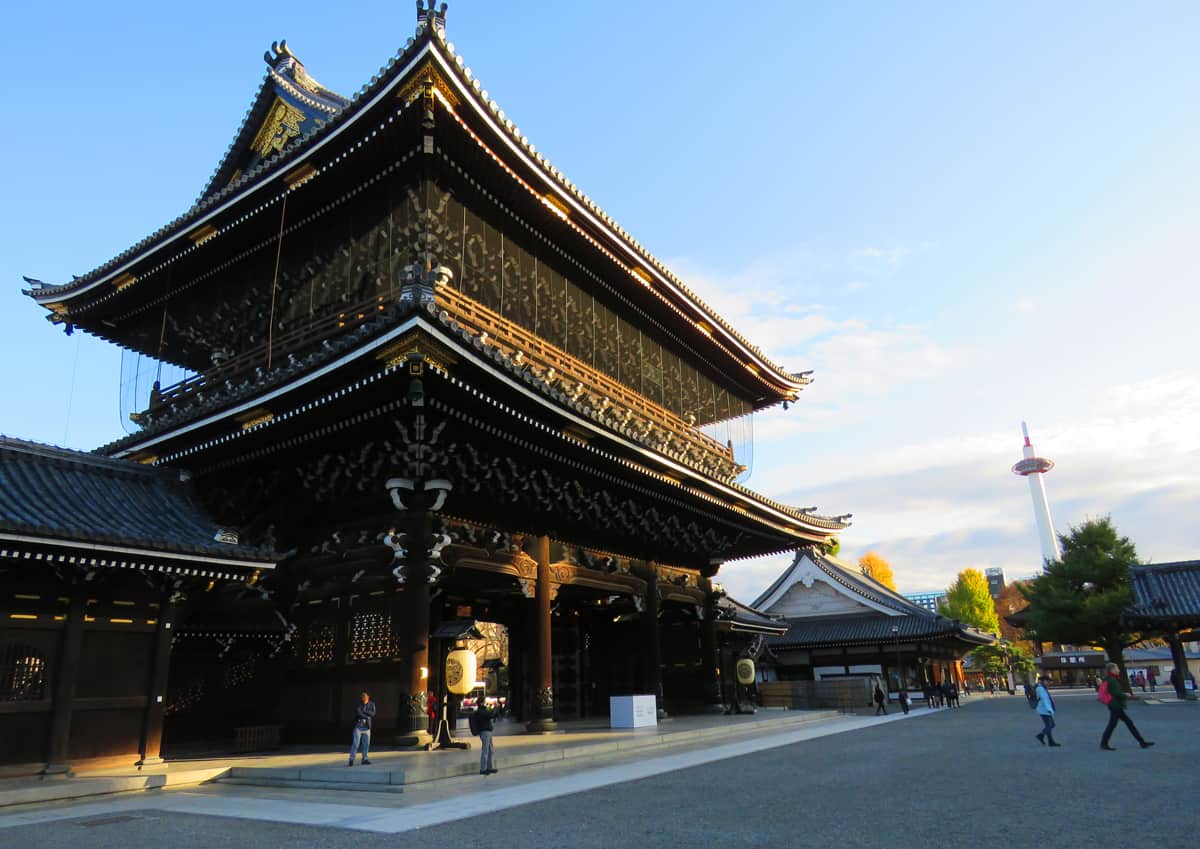
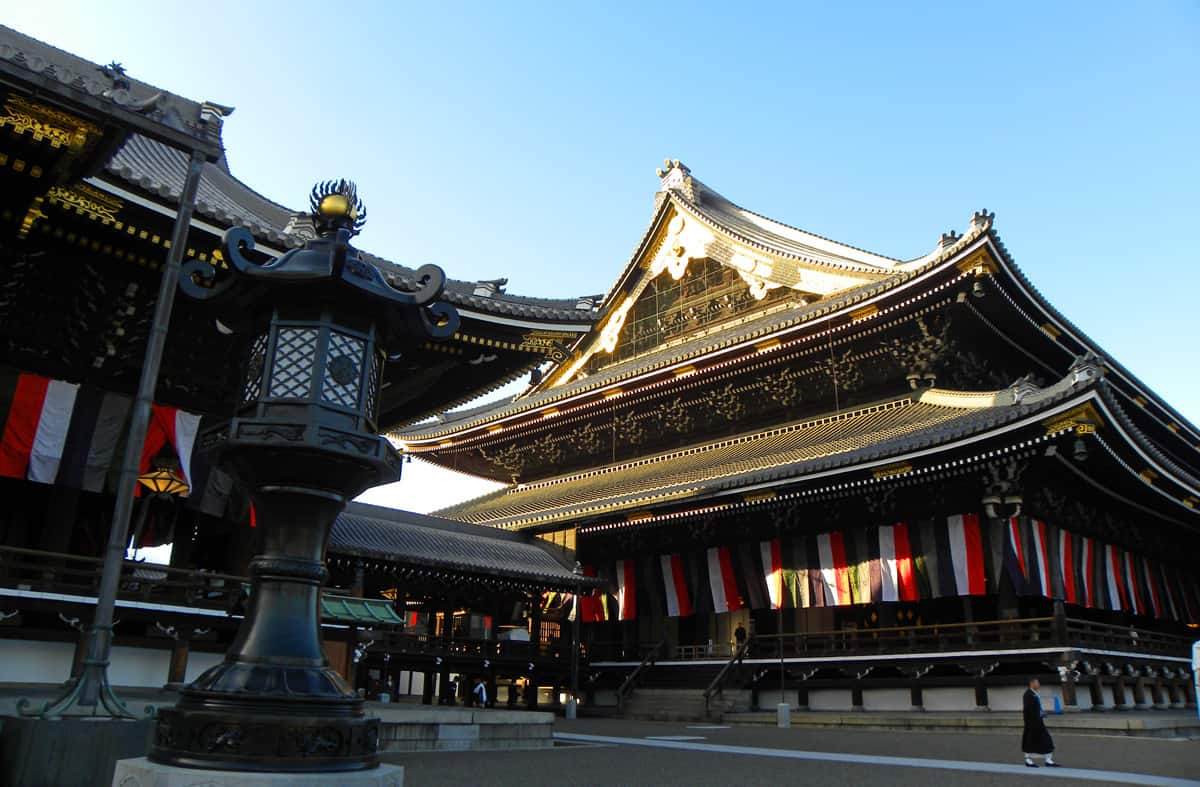
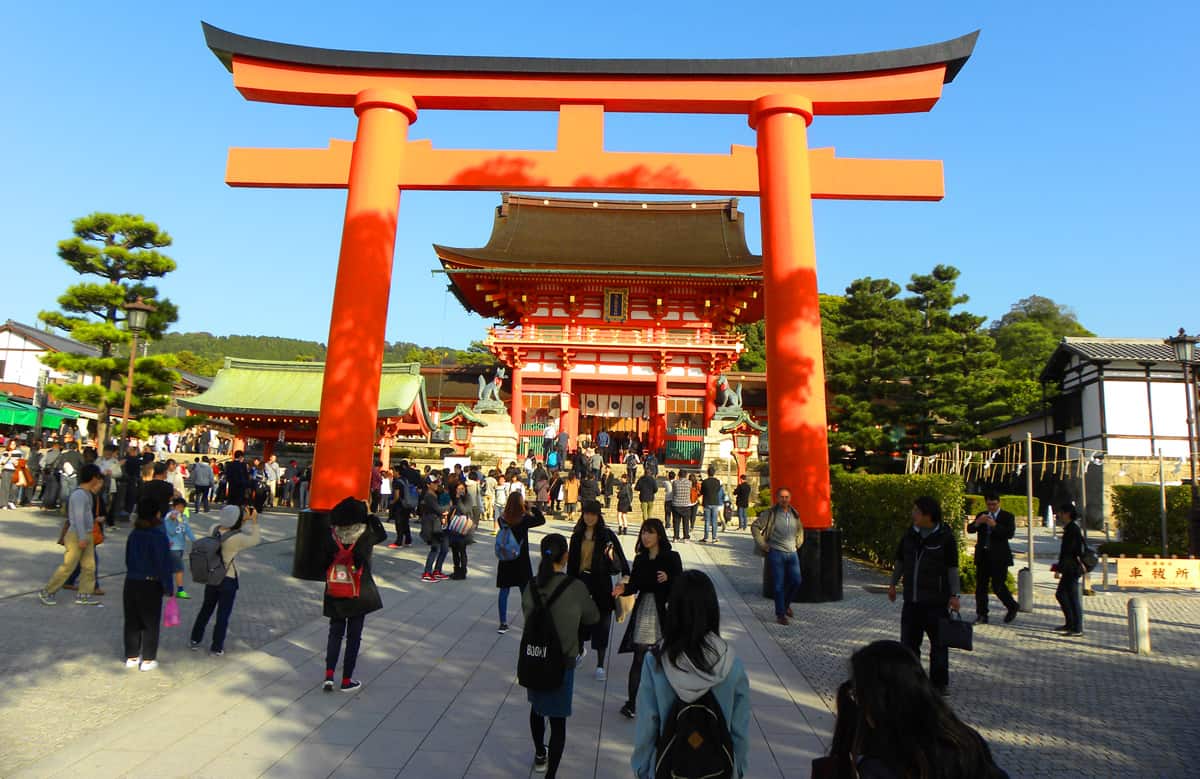

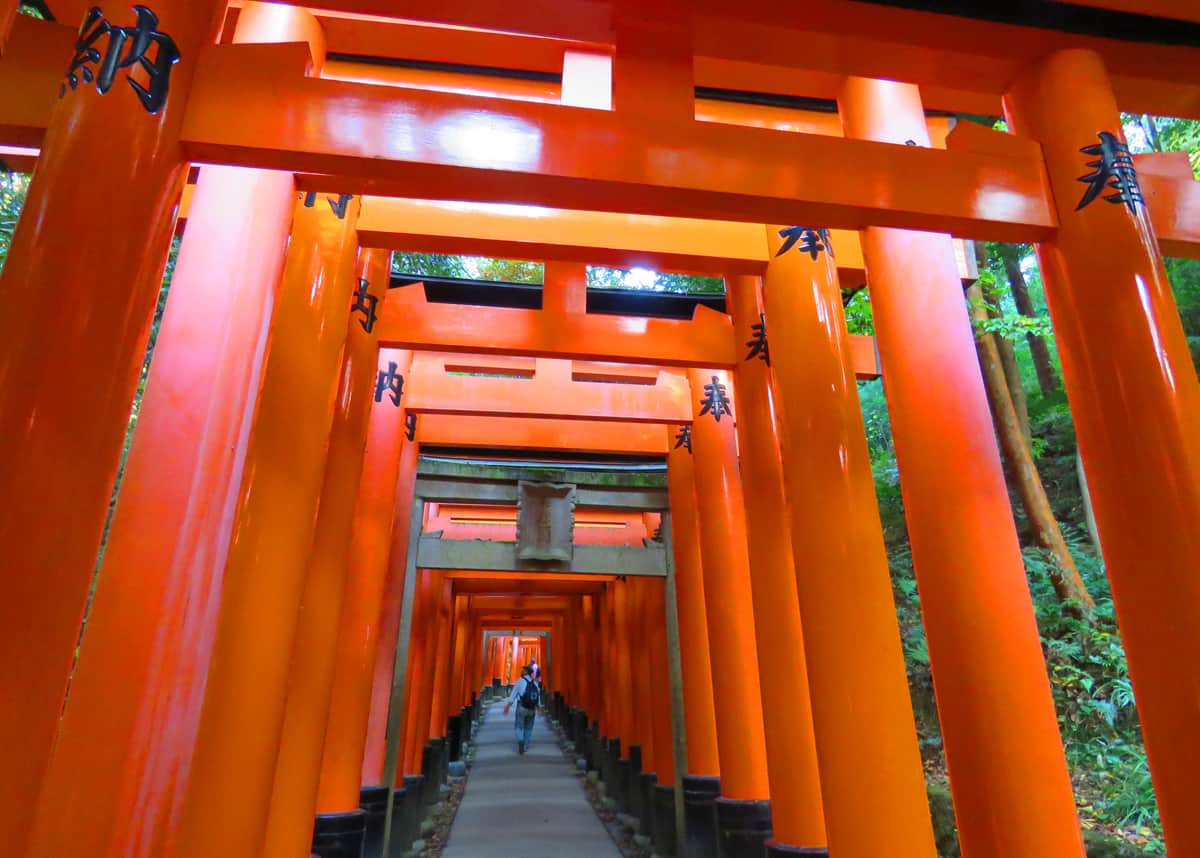
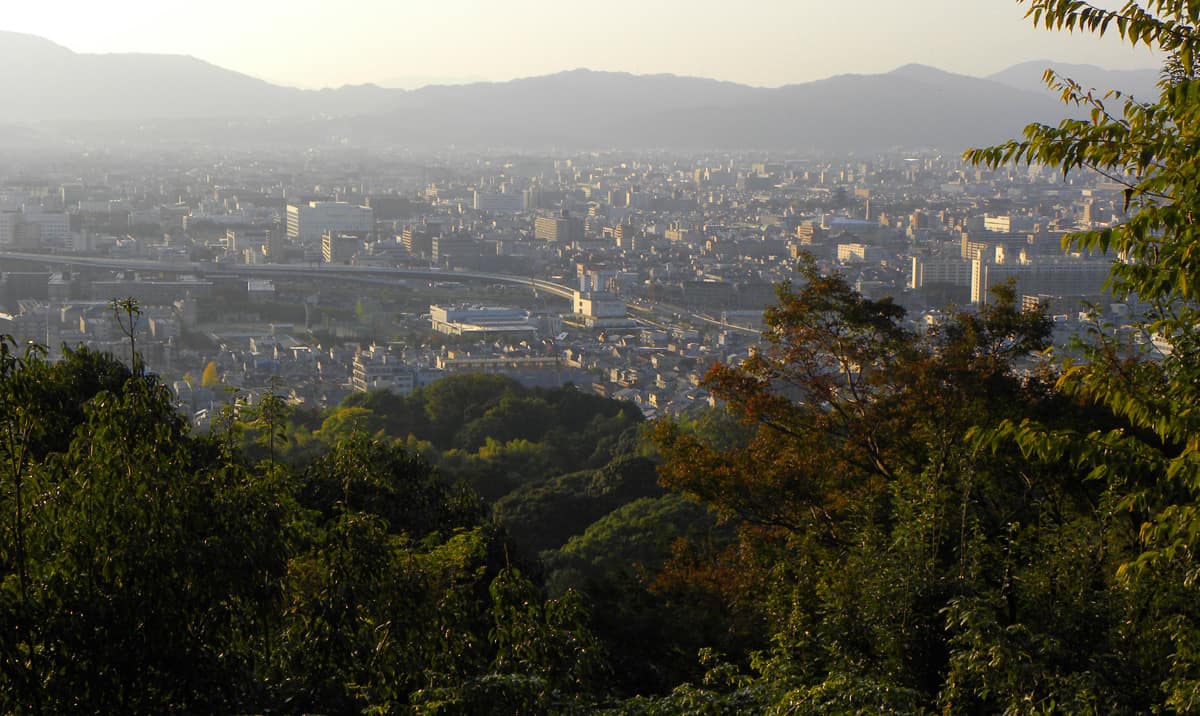

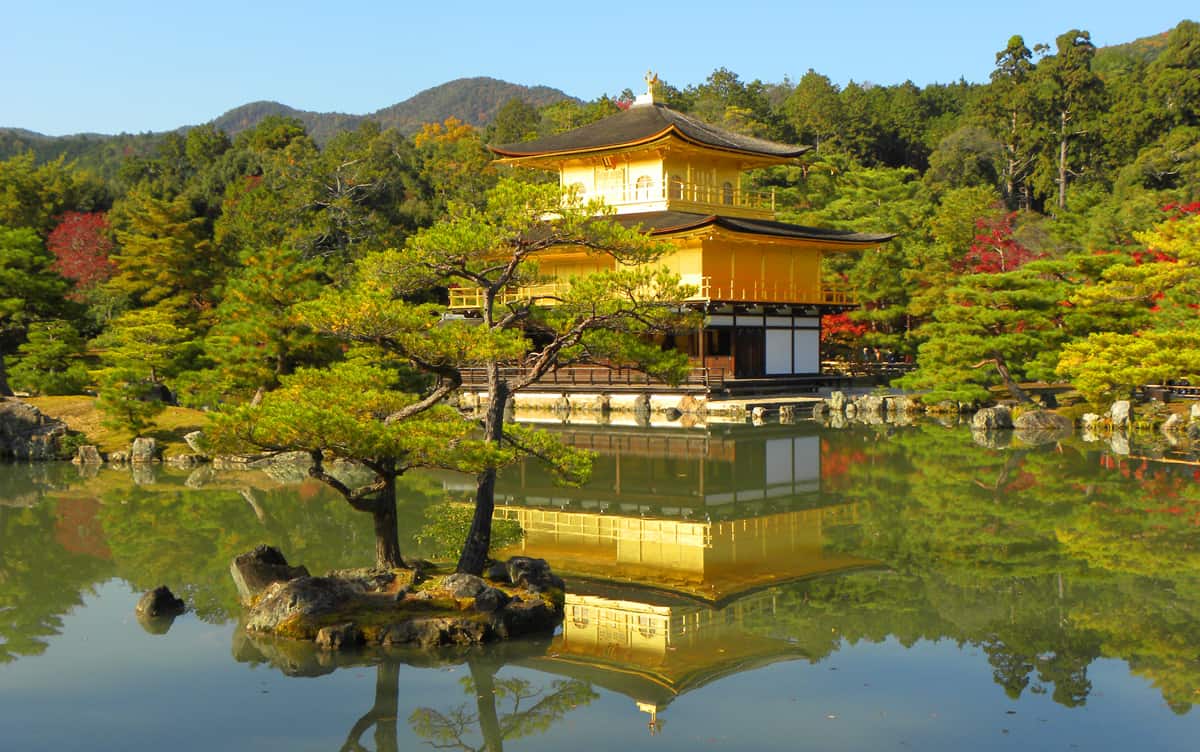
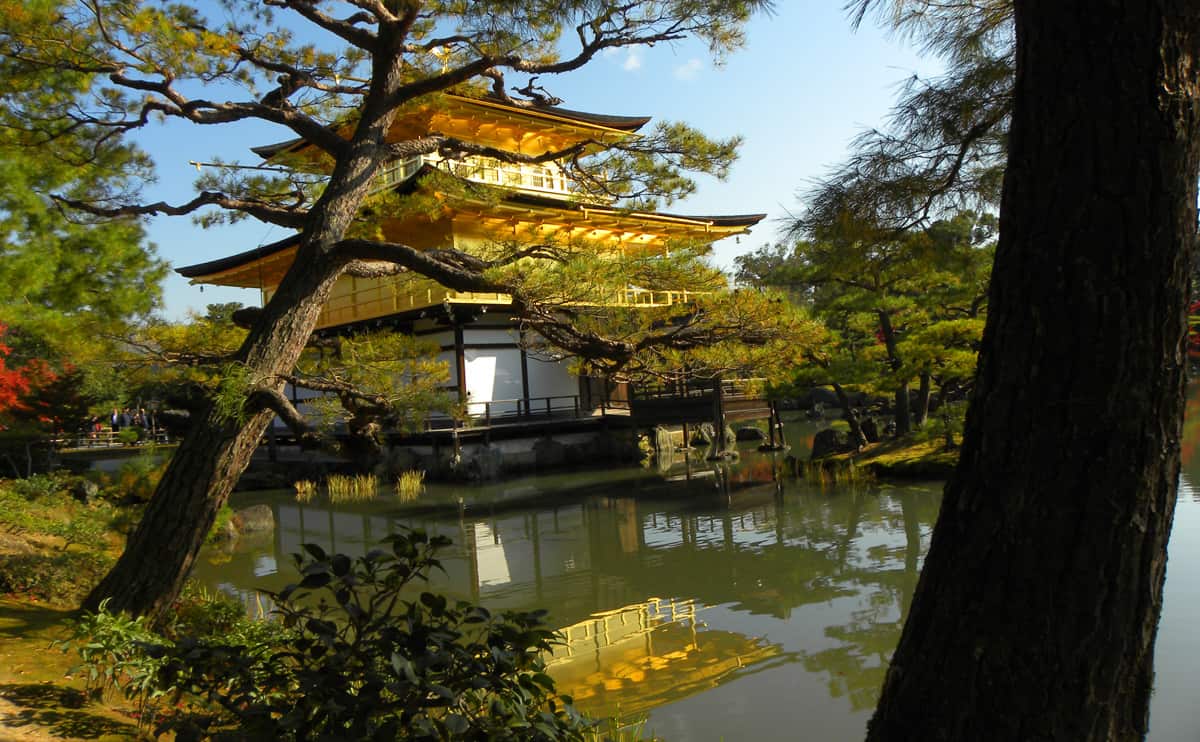
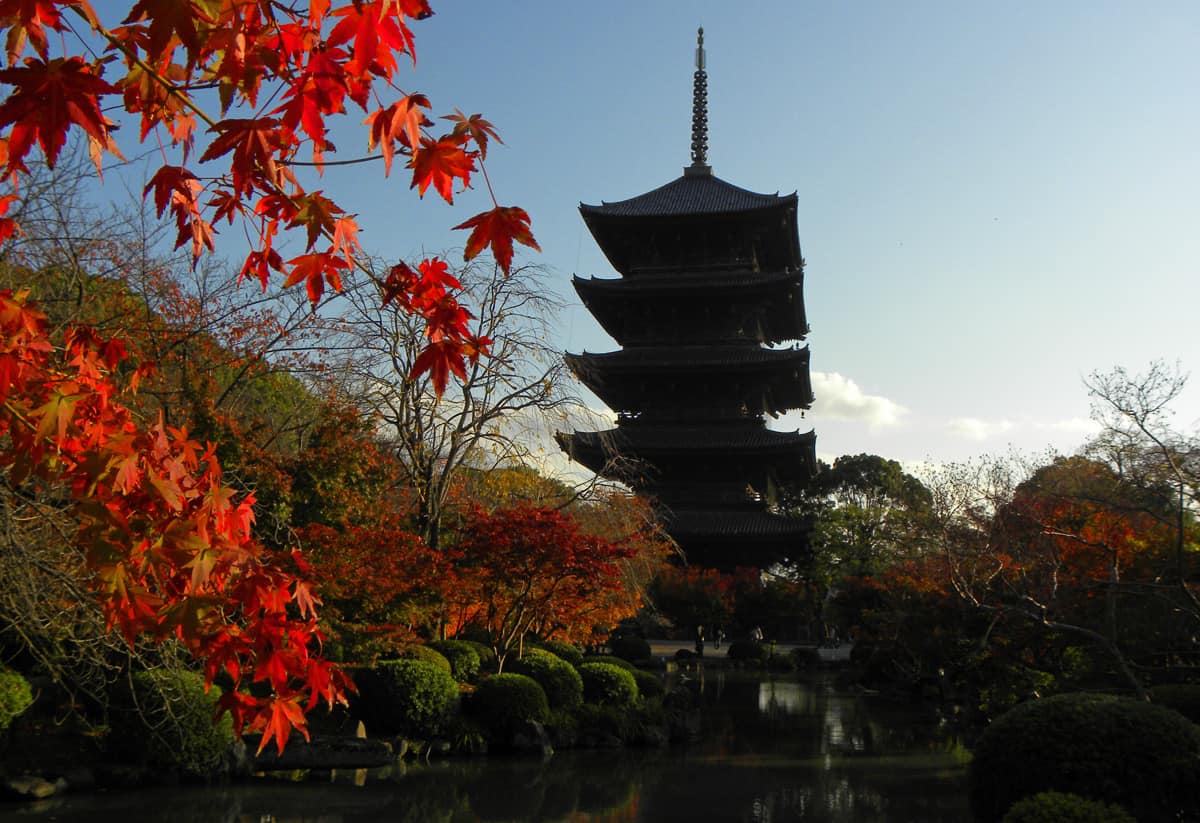
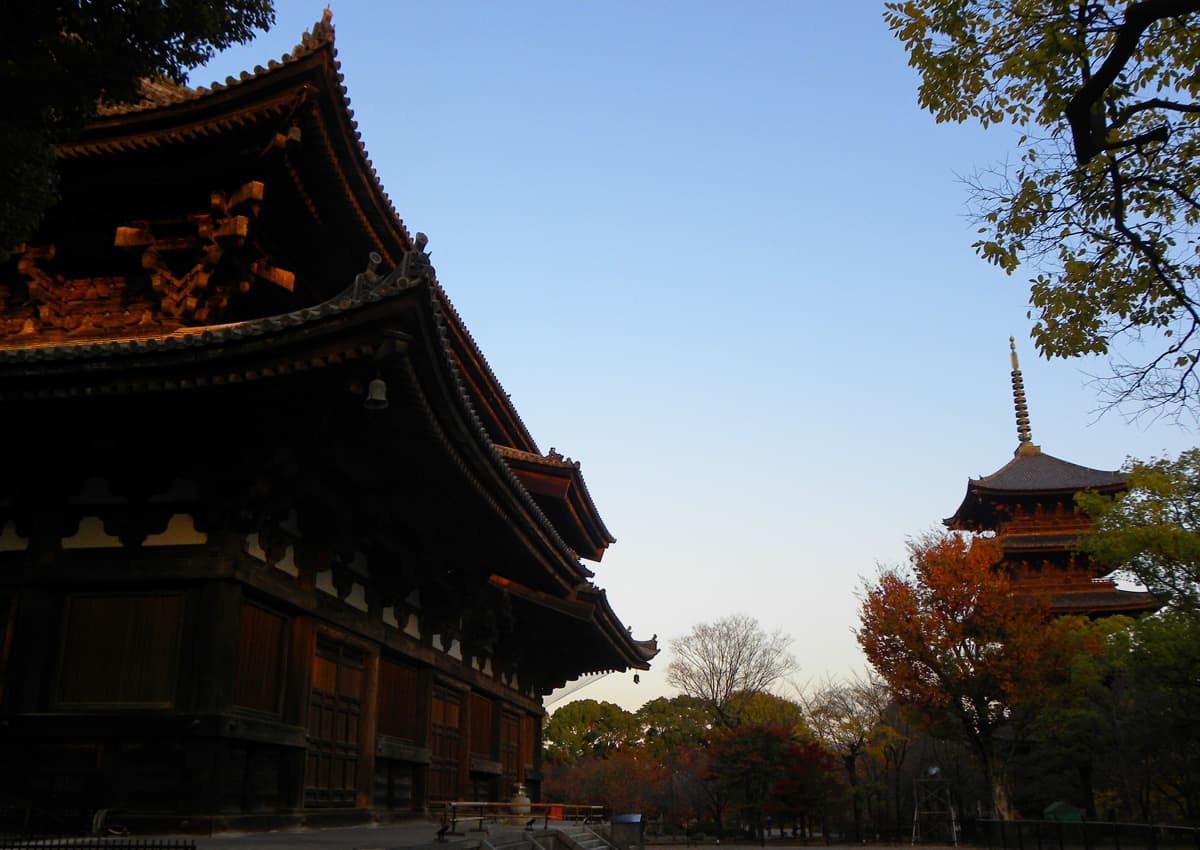
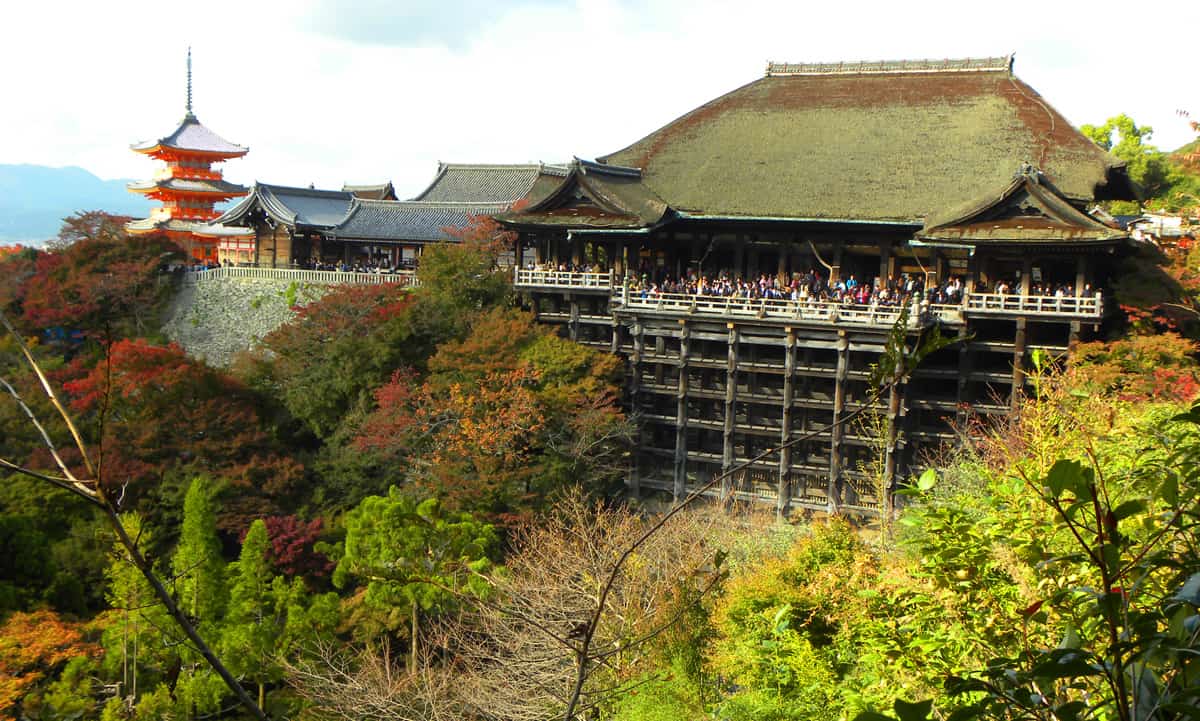
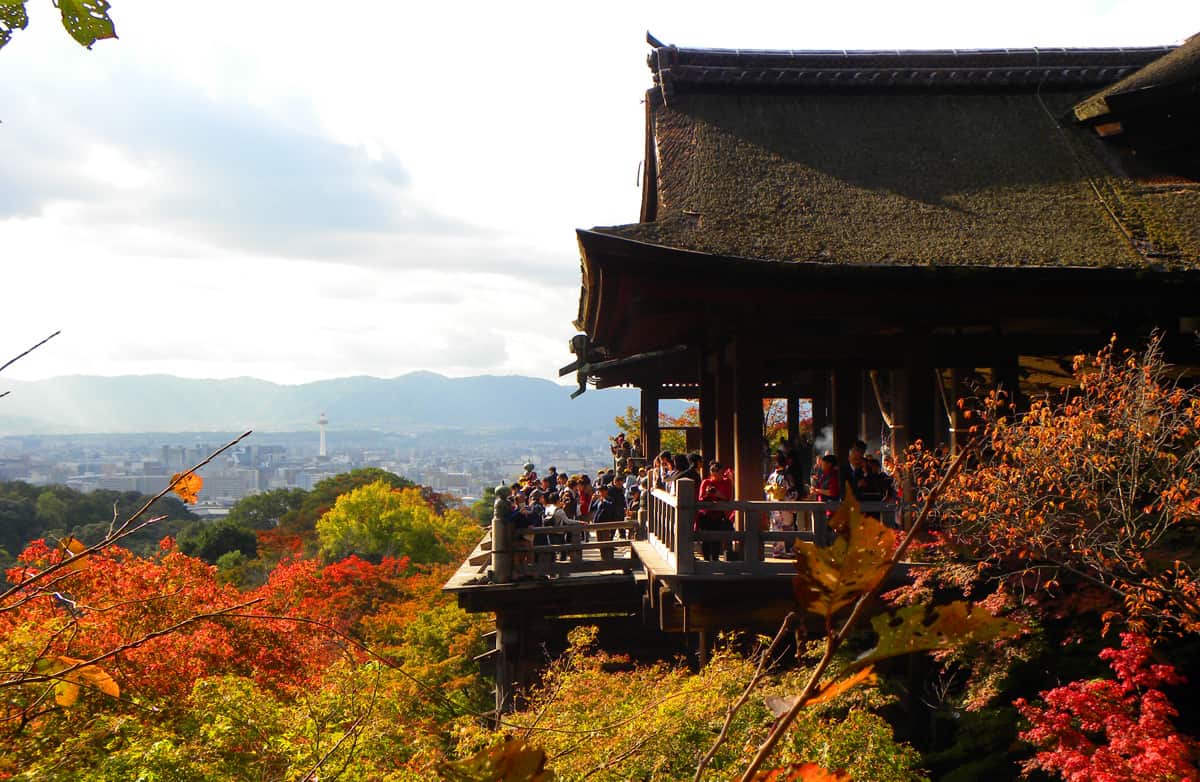
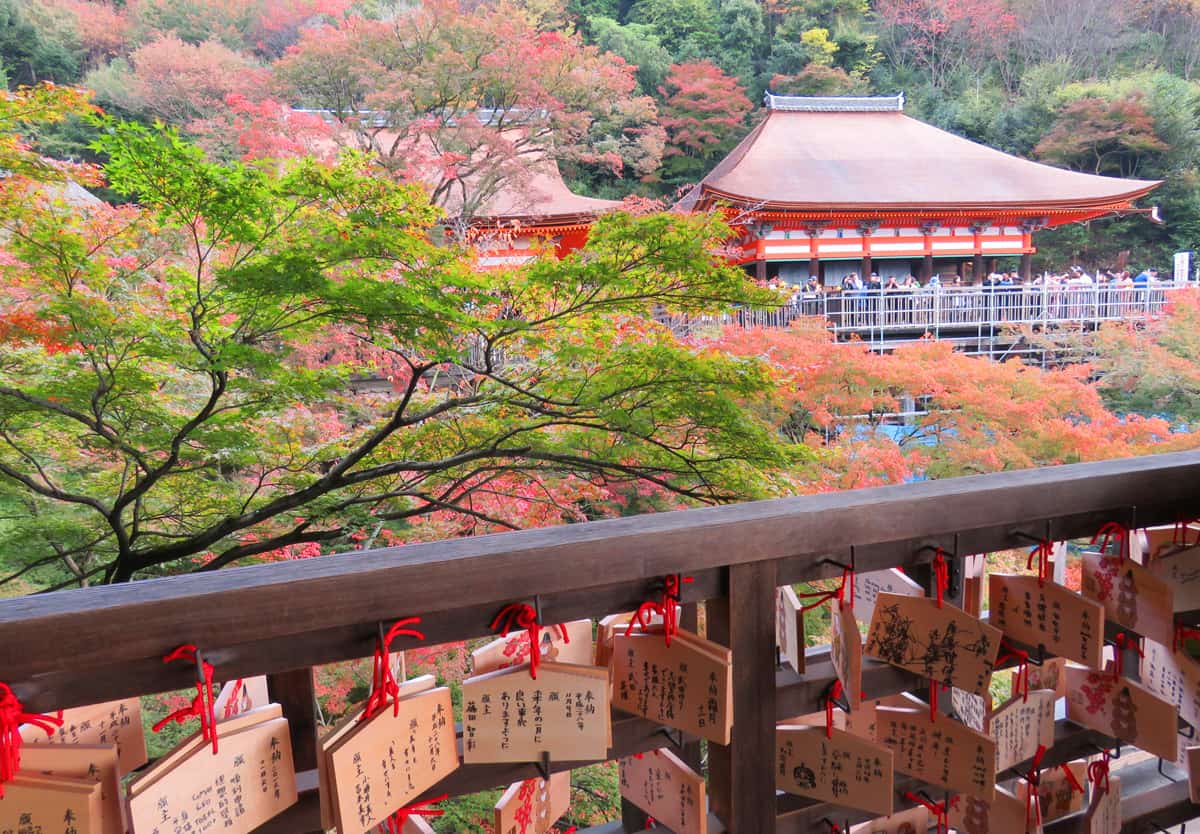
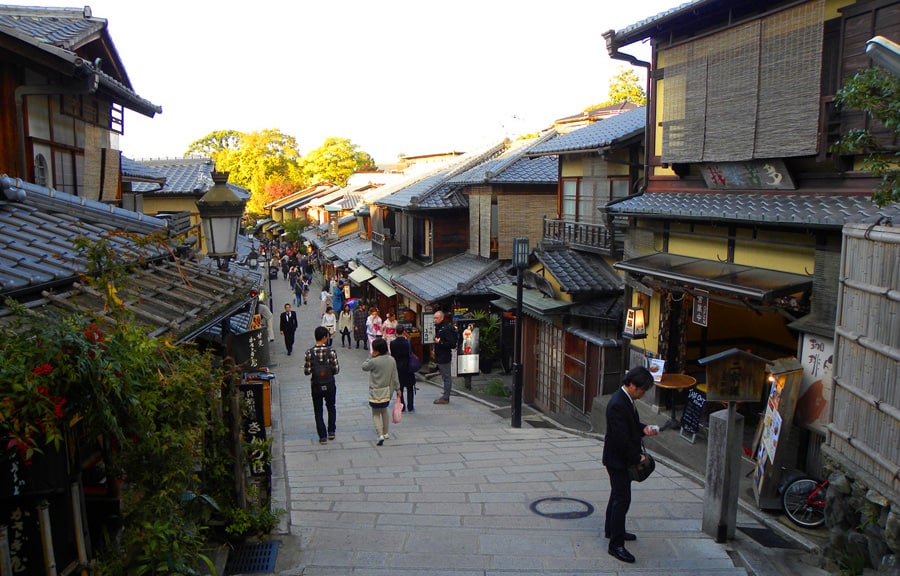

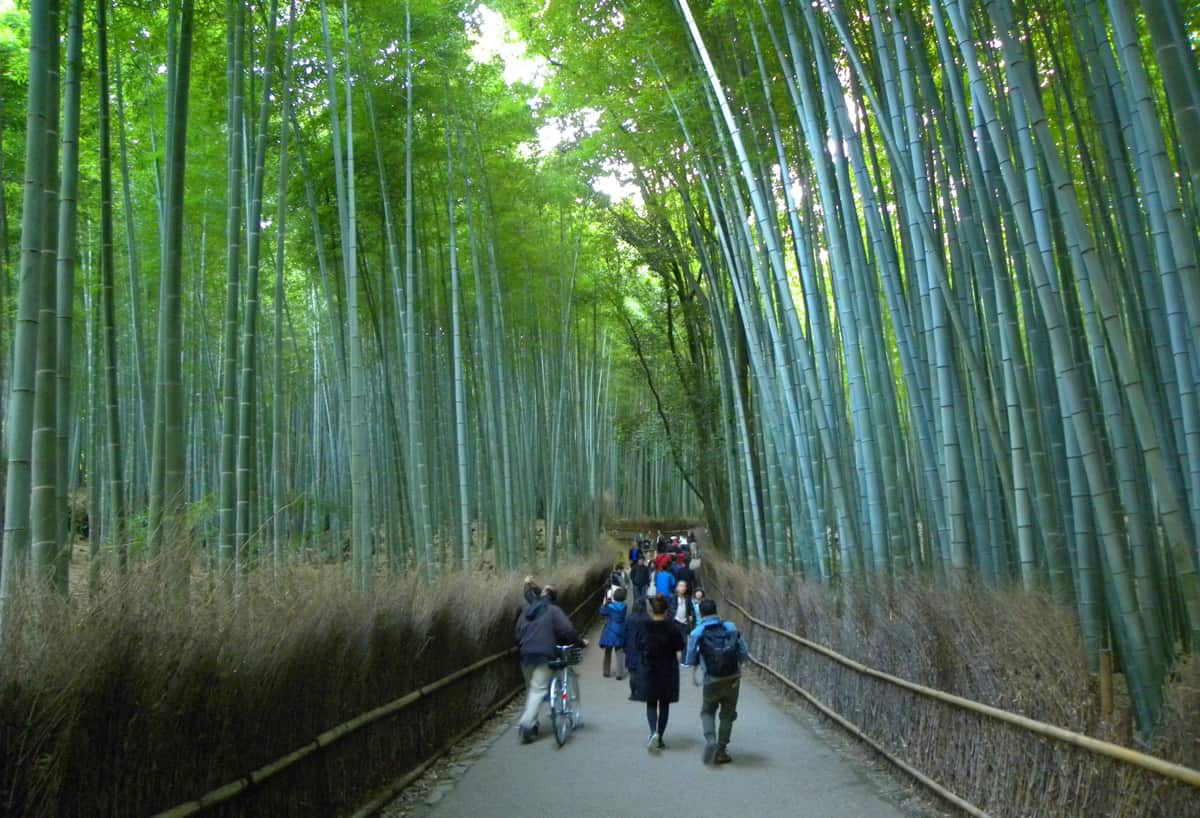
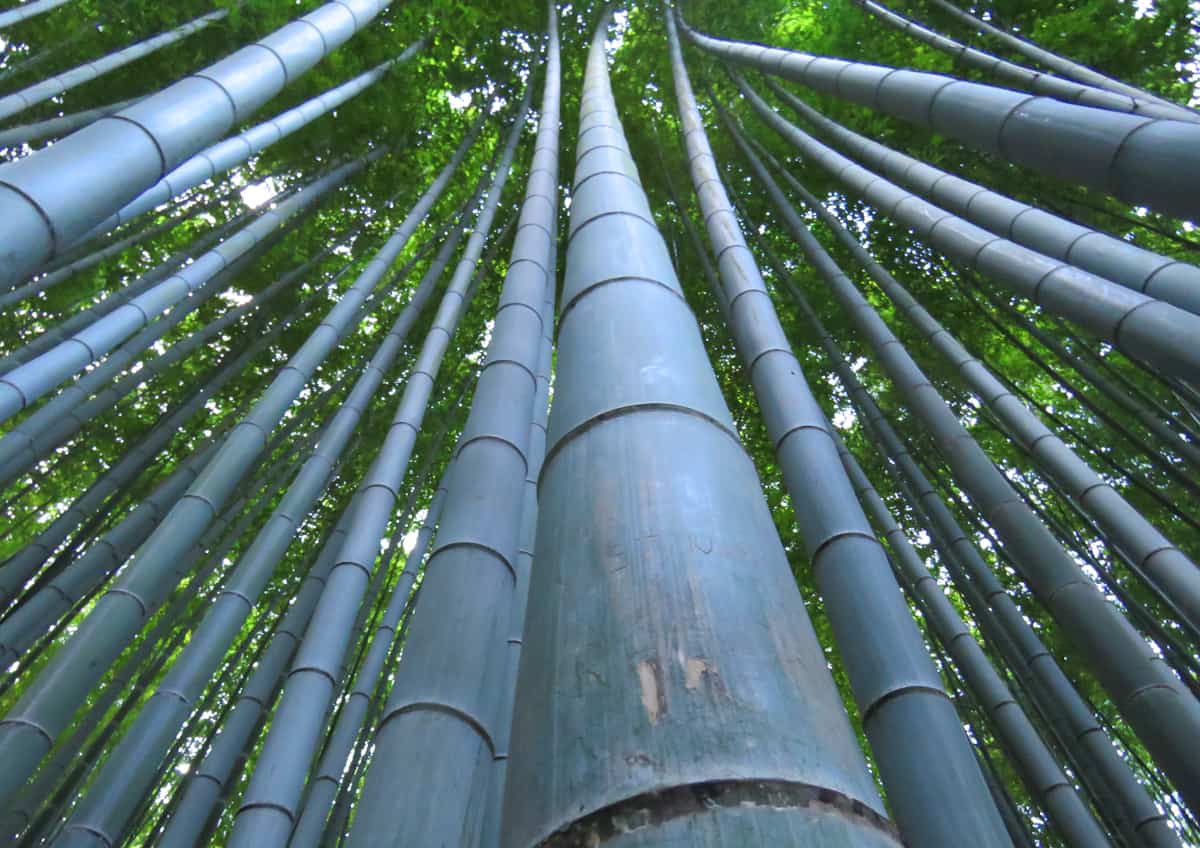


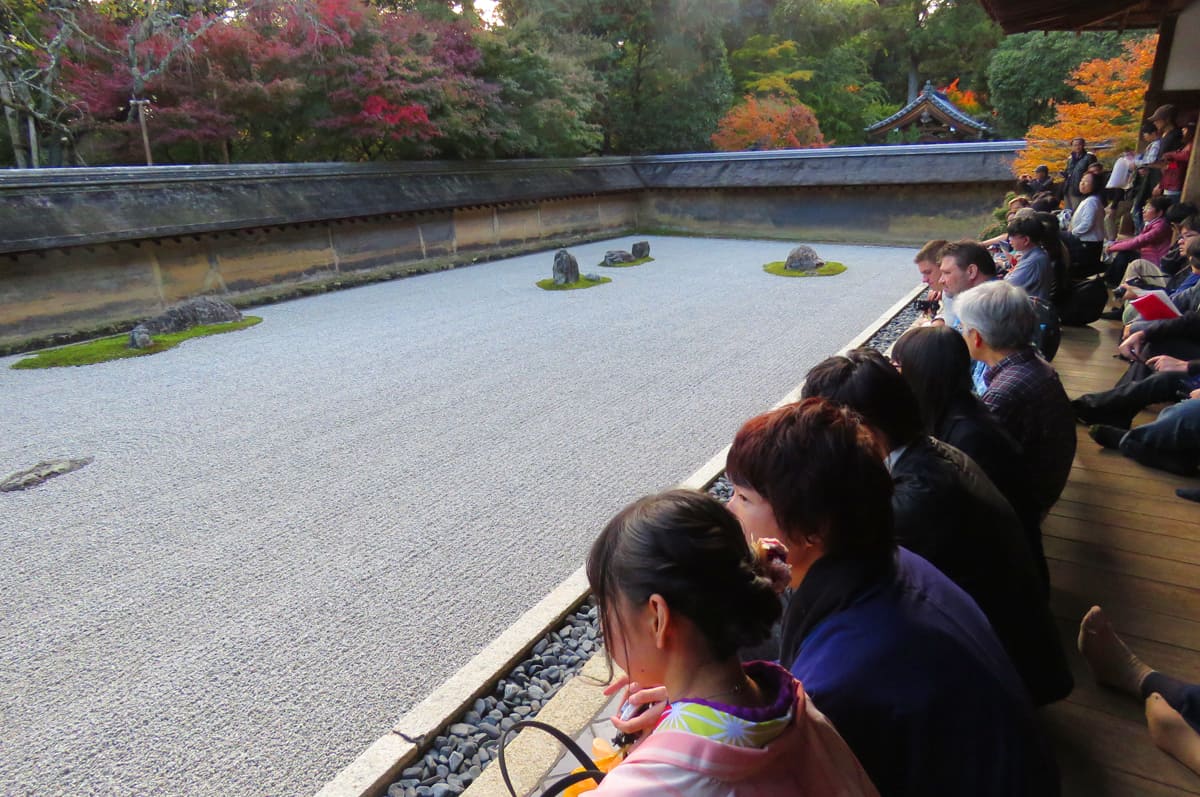
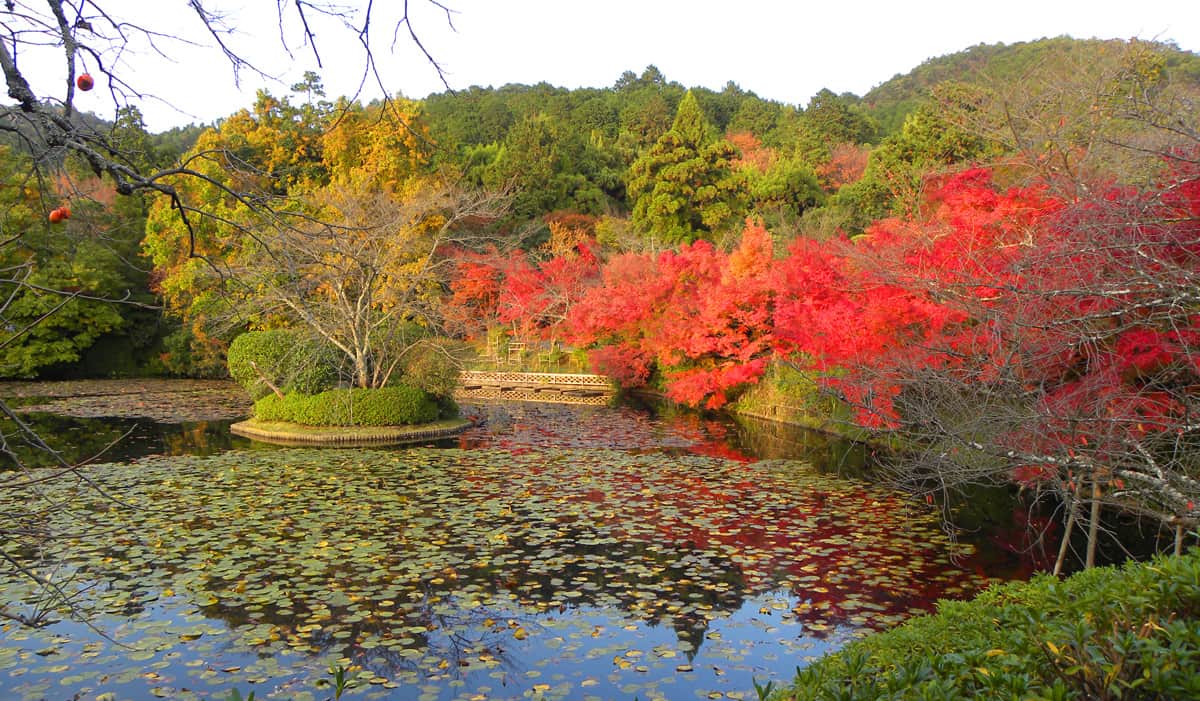
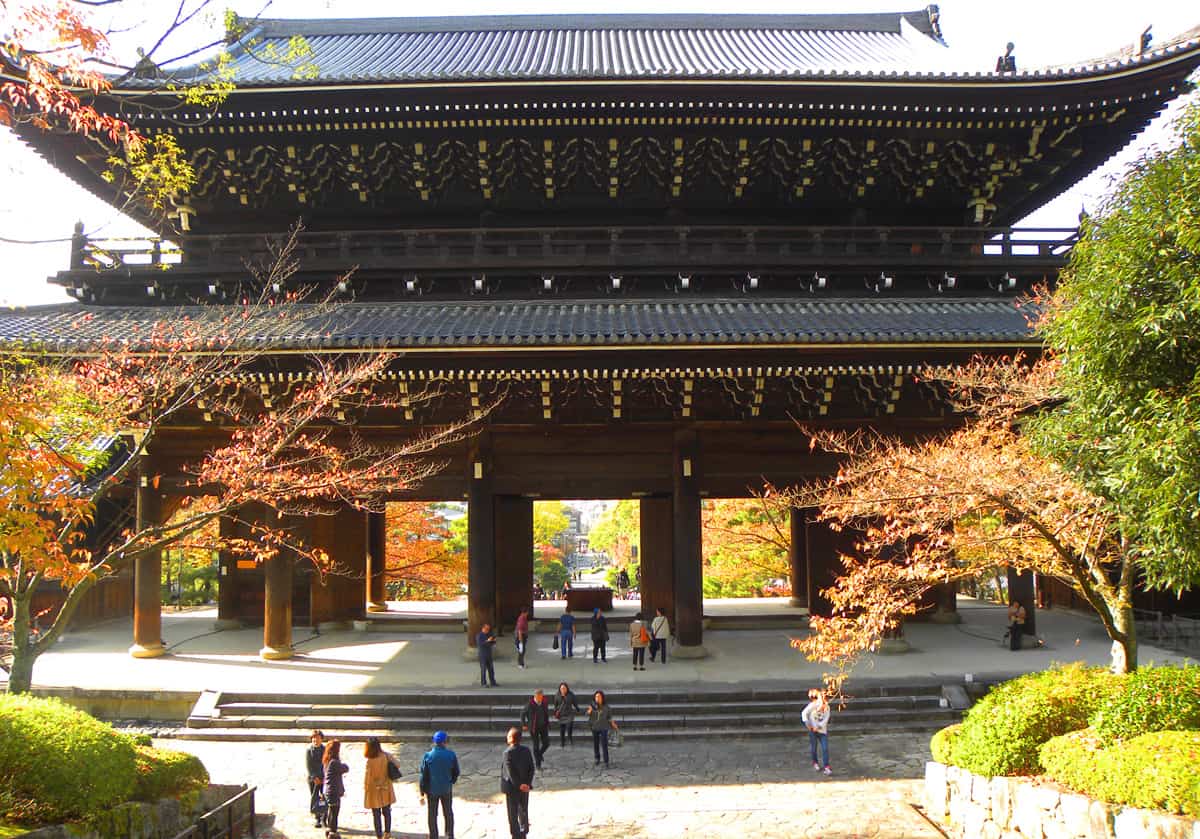
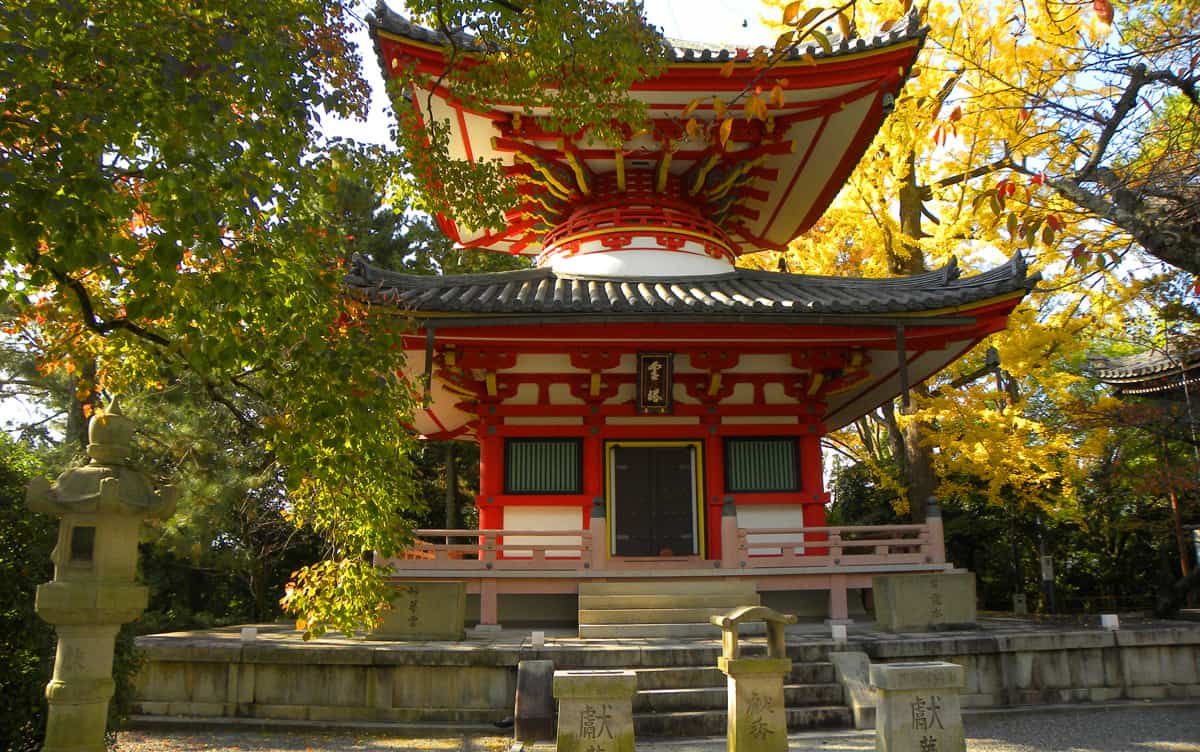
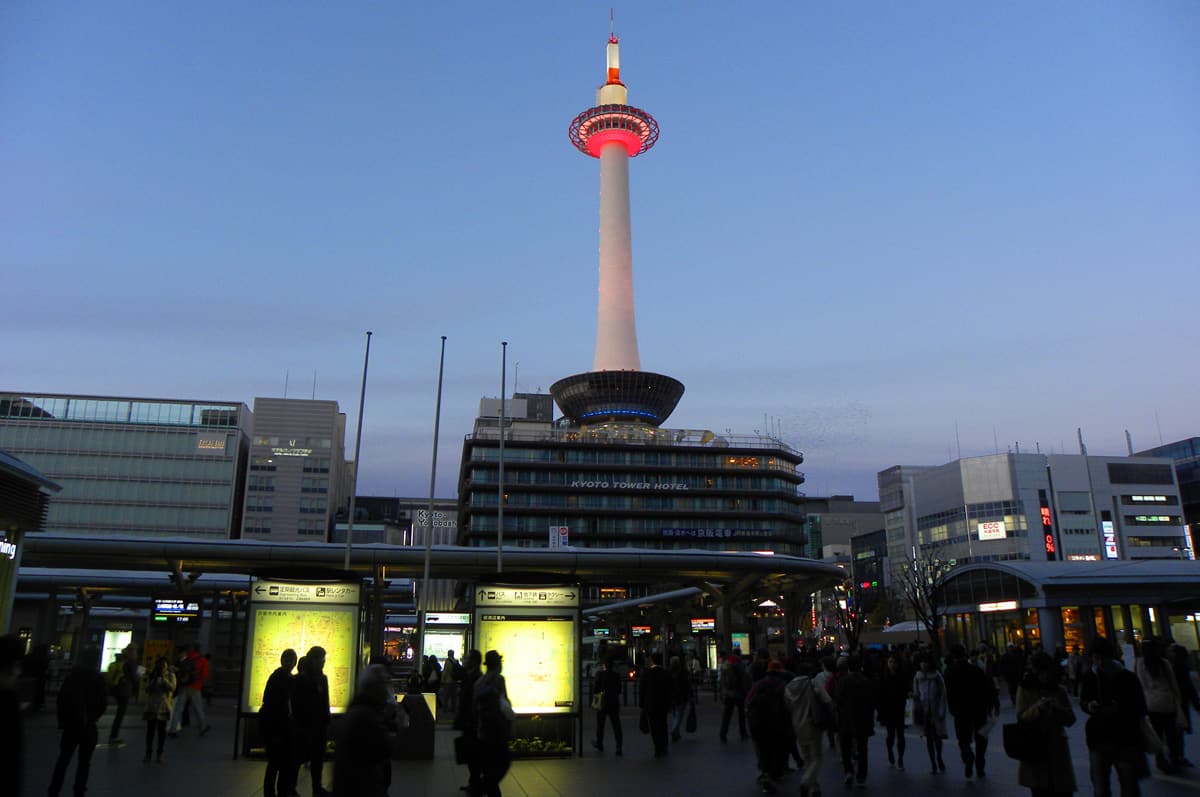

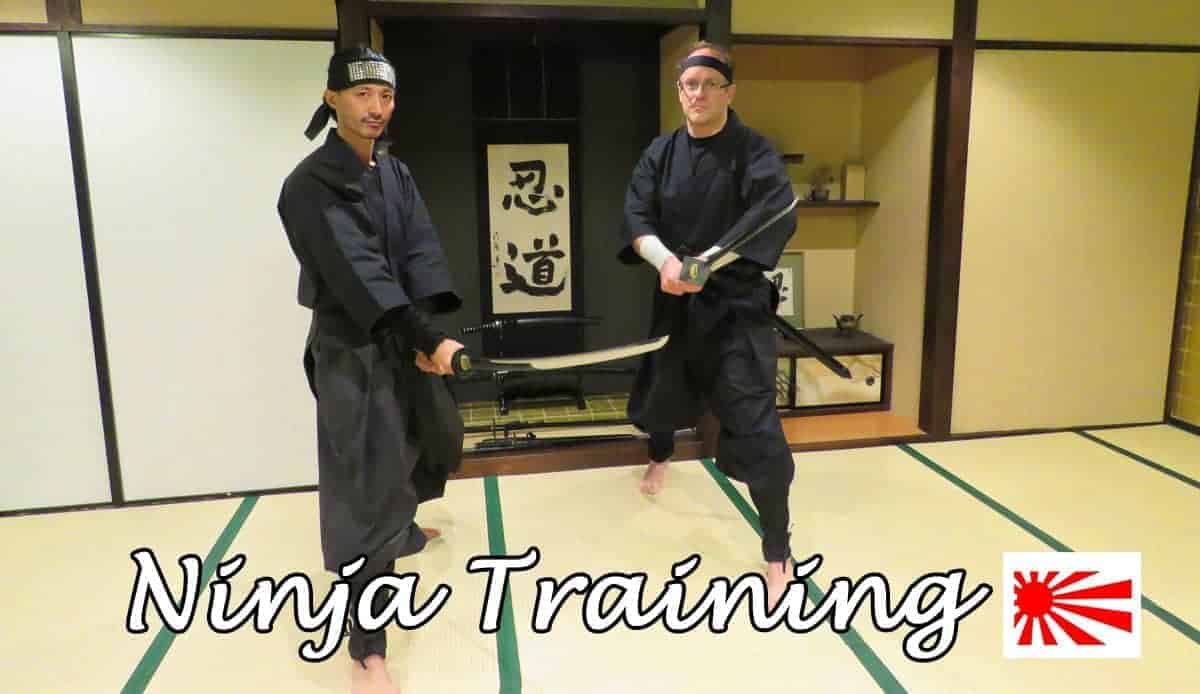


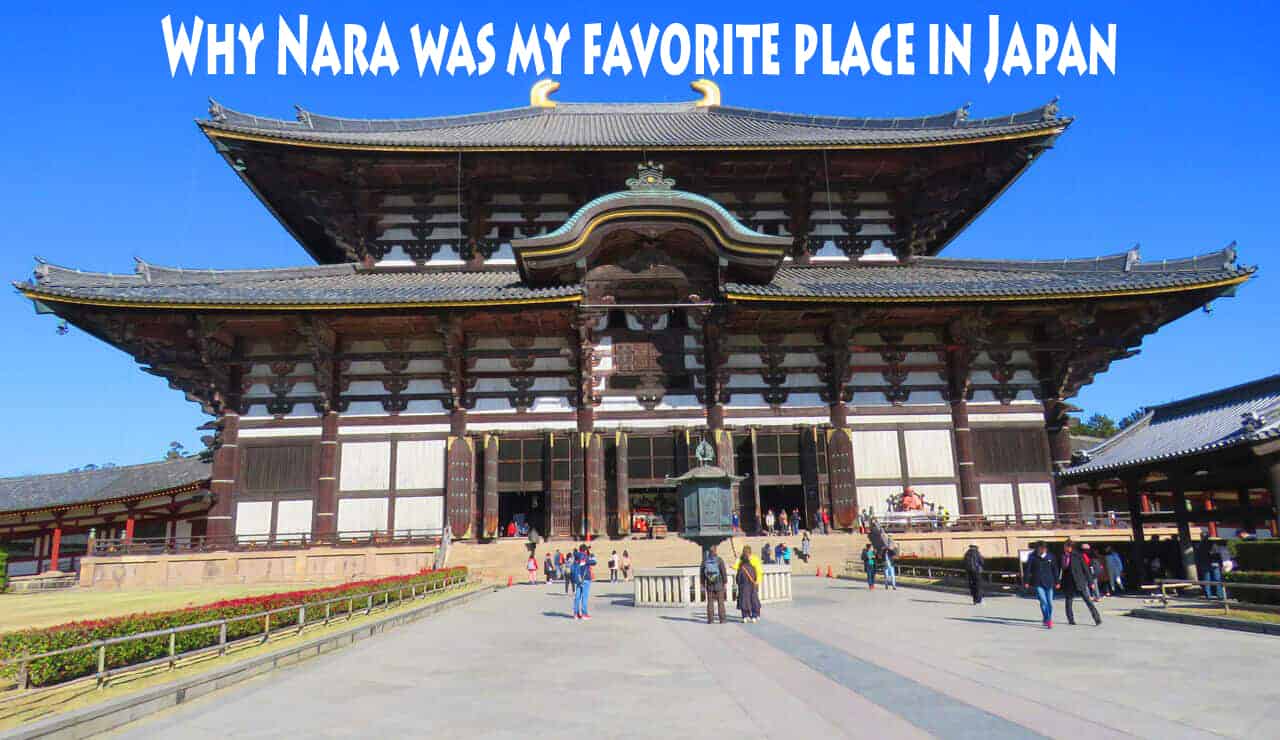
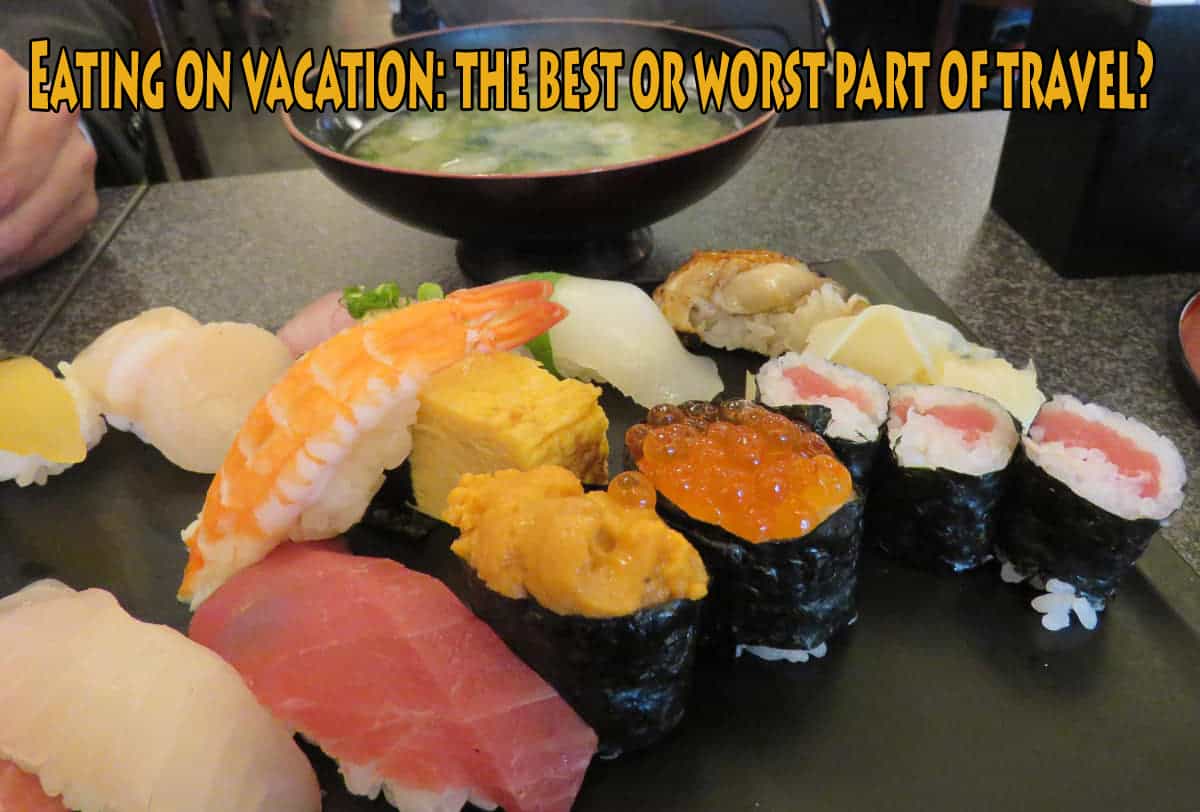
The temples and gardens in Kyoto are really impressive especially during autumn. Your photographs are so stunning by the way, thanks for sharing!
getting ‘templed out’ is an unavoidable hazard in Japan. but Kyoto… ahhhh its wonderful. very happy memories. great photos!
Thanks Andy!
What Beautiful temples (What great photos !) Kyoto never seems to disappoint – anyone who has been appears to have been ‘entranced’ by it ; even all the guide books agree ! Indeed the touchstone and cultural centre of traditional Japan … Luckily the capital was moved to Tokyo (Edo) about the time Japan started to open up to the world, or its probable that much (or all…) of its beauty and uniqueness would have been lost .
Love the bamboos (actually grasses…) which are the ‘strongest’ of ‘woods’ (tensile strength of steel..) and almost ‘rot-proof’ as well. Don’t know if its still the case in Japan, but in China and Indo-china bamboo is still used as scaffolding for new constructions. The ultimate renewable resource it grows very rapidly – some species more than 1 metre a day…) and it can be very invasive. Fascinating plant that has over 1.000 species in 91 generae ranging from a few centimetres high to the 35 metre plus size of the largest (Dendrocalamus giganteus) which is native to Burma, Thailand, Vietnam and southern China. (Yep, I would go just to see the bamboos…) Great post Frank.
Thanks for the comment Tony, so true about the bamboo. Seems to be a favorite of everyone 🙂
You were really lucky with the autumn colors in Kyoto! And glad to hear that Lisette liked the Buddhas at the Toji-Temple – did you buy one of their travel charms? You do not find them everywhere, and as Toji was founded by Kukai, who is sort of responsible of pilgrims in general, they also sell travel charms. And your pictures of the station are great! Just looking at them makes me want to go to Kyoto – we are off to Japan on February 20th!
Actually we planned for November and the Autumn colors. It’s a great time of year to go.
No, didn’t but any of Toji’s travel charms although did get quite a lot of souvenirs (including a couple of really nice kimonos that we got at the Nishijin textile center).
Good for you! You guys are the Japan experts!
Ben used to live in Nagoya, which is not terribly far from Kyoto. And he thus had a chance to visit fairly regularly. Your photos are magnificent especially the ones of the bamboo forest ~ such perfect bamboo ~ and the colors of the trees in the temple grounds.
The magnificence of the Golden Pavilion ~ your photos certainly do it justice!
The emmas ~ the wooden tablets hanging at all the temples to express wishes are a wonderful portable piece of Japan. Ben had a terrific collection of those at one point in time from all his years of living there and going to temples.
Stunning photos of the red gates to the shrine. Very dramatic indeed!!!
Peta
Thanks very much Peta. Ben used to live in Japan!? Wow. Must have been the experience.
I recognise lots of your photos in this post Frank. I especially enjoyed visiting Arashiyama Bamboo Grove and the Railway station. I’m with you on the tourist board front. It was always our first point of contact when we arrived in a new city in Japan – they were always ever so helpful and always friendly. I also remember the friendly volunteers who would help you cross the road near major tourist attractions – very Japanese!
Nobody beats the Japanese in that respect. So organized, helpful…the best hosts.
Yes, never thought the train station would be a highlight but it was. Also found a place in the downstairs mall where they had great (and inexpensive) takeaway sushi.
no Frank your stuff like this is pretty top drawer! I follow another blogger that is also pretty good with her camera and her blog is a full time gig that pays enough to keep her living pretty well. Her blog is “Alex in wanderland” (all one word) check her out, I think you’ll see what I’m talking about!
But paid or not you’re doing fine content here, so Thank you!
cheers!!!
ron:)
Thank you Ron for the kind words. Yes, I know Alex in wanderland. Looks better in a bikini than I do 🙂 You ever notice that there’s a lot more women bloggers than men? She’s definitely one of the successful ones.
Well to be honest I’m not a big blog follower, rather I prefer youtube. And out of all the travel vlogs I’ve noticed the mix favors the boys? But you’re right in that of the few travel blogs I do follow you and “Skins” are the only guys out of 4-5 total. I would suggest trying vlogging but taking great photos, research, and writing is already a pain. If you were shooting and editing videos, in addition, how would you ever find time to actually enjoy your travels?
It’s all about taste.
I don’t like vlogs because I find it too time consuming to sit there and watch people’s videos. With reading you can skim text and photos to see if you find it interesting – but with video you have to sit through it and fast forward….just not for me. But I like podcasts once in a while because you can listen to it in the background while doing something else. Just what I prefer. As far as me personally doing it I feel self conscious in front of the camera – it would take a lot of practice and in the end why am I doing it? I’ll do the occasional video (I have a youtube channel) but my interests lie more with writing and photography (and I have to credit Lissette – she actually takes better photos than I do).
I used to really like Skins, it was a mix of travel and girls and it was fun reading him. I had my own single times and I don’t mind reading about those kinds of adventures. But then he turned it into an R rated site and started getting too graphic with the language. It wasn’t about travel anymore, it was about meeting hookers. I unsubscribed at that point, just wasn’t my thing.